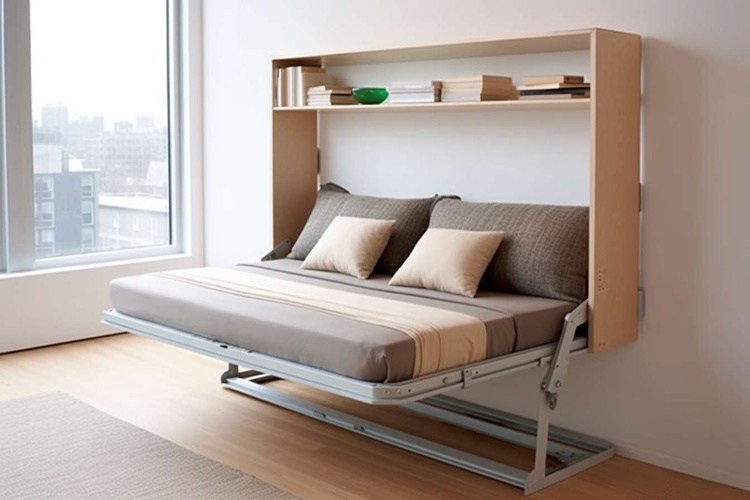Micro-Apartment Boom: Redefining Urban Living Spaces
The real estate landscape is witnessing a paradigm shift as micro-apartments gain traction in major cities worldwide. These compact living spaces, typically under 400 square feet, are reshaping urban housing markets and challenging traditional notions of home size. With soaring property prices and increasing urbanization, micro-apartments offer a solution to housing shortages while catering to changing lifestyle preferences of millennials and young professionals.

The concept of micro-living isn’t entirely new. In cities like Tokyo and Hong Kong, small living spaces have long been the norm due to high population density and limited land availability. However, the recent surge in micro-apartments across Western cities marks a significant shift in housing trends and urban development strategies.
Driving Factors Behind the Trend
Several factors contribute to the increasing popularity of micro-apartments. Urbanization continues to drive people towards city centers, where job opportunities and amenities abound. However, the rising cost of real estate in these areas has made traditional housing options unaffordable for many.
Demographic shifts also play a crucial role. Millennials and Gen Z, who often prioritize experiences over possessions, are more willing to trade space for location. These generations tend to spend less time at home, valuing proximity to work, entertainment, and social hubs over large living spaces.
Additionally, the trend towards minimalism and sustainability has made compact living more appealing. Micro-apartments generally have a smaller environmental footprint, aligning with the values of environmentally conscious consumers.
Design Innovations in Micro-Living
The success of micro-apartments hinges on innovative design solutions that maximize space utilization. Architects and interior designers are pushing boundaries to create functional and aesthetically pleasing living environments within limited square footage.
Multifunctional furniture plays a pivotal role in micro-apartment design. Murphy beds that fold into walls, tables that transform into workspaces, and modular storage systems allow residents to reconfigure their living areas based on immediate needs. Some developments incorporate smart home technology, enabling residents to control lighting, temperature, and even furniture arrangements through smartphone apps.
Vertical space is utilized to its fullest potential, with loft beds, elevated storage solutions, and floor-to-ceiling shelving units. High ceilings and large windows create an illusion of spaciousness, while carefully chosen color palettes and lighting designs enhance the perception of space.
Economic Implications for Real Estate Markets
The micro-apartment trend has significant implications for real estate markets and urban economies. For developers, these units offer higher yields per square foot compared to traditional apartments. The ability to fit more units into a building footprint can lead to increased profitability, especially in areas with high land costs.
For cities grappling with housing shortages, micro-apartments present an opportunity to increase housing stock without extensive new construction or urban sprawl. This can help alleviate pressure on the rental market and potentially slow the rate of rent increases in high-demand areas.
However, the proliferation of micro-apartments is not without controversy. Critics argue that these units may lead to overcrowding and negatively impact quality of life. There are also concerns about the long-term effects on neighborhood dynamics and local infrastructure.
Regulatory Challenges and Zoning Issues
As micro-apartments gain popularity, cities are grappling with how to regulate this new housing typology. Many existing building codes and zoning laws were not designed with micro-units in mind, leading to regulatory hurdles for developers.
Minimum square footage requirements, originally implemented to prevent slum-like conditions, are being reevaluated in light of modern micro-apartment designs. Some cities have introduced pilot programs or zoning amendments to accommodate these smaller units, recognizing their potential to address housing needs.
Parking requirements present another challenge, as traditional ratios of parking spaces to units may not be appropriate for micro-apartment developments. Cities are exploring reduced parking requirements or car-sharing programs as alternatives.
The Future of Urban Housing
The micro-apartment trend signals a broader shift in how we conceptualize urban living spaces. As cities continue to grow and evolve, the demand for efficient, affordable housing solutions is likely to increase.
Looking ahead, we may see further innovations in micro-living, such as co-living spaces that combine private micro-units with shared communal areas. The integration of technology and sustainable design principles will likely play an increasingly important role in making small spaces more livable and energy-efficient.
While micro-apartments may not be suitable for everyone, they represent an important addition to the housing ecosystem. As urban populations grow and housing affordability remains a pressing issue, these compact living spaces offer a viable solution for certain demographics and lifestyles.
The success of micro-apartments will ultimately depend on thoughtful design, appropriate regulation, and their ability to meet the evolving needs of urban dwellers. As this trend continues to unfold, it has the potential to reshape urban landscapes and redefine our understanding of what constitutes a home in the 21st-century city.





